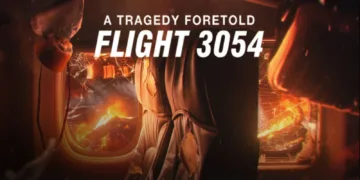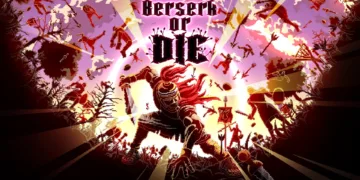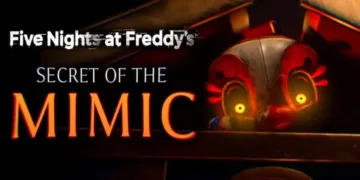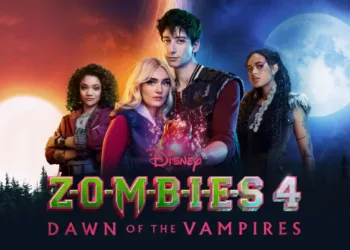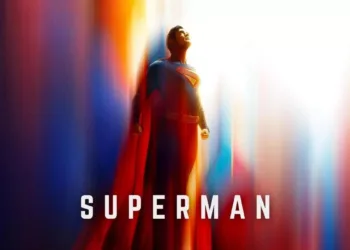In the landscape of cinematic drama, the hospital story is a well-trodden path, often paved with manufactured sentiment. Charliebird opens in such a familiar setting, a children’s hospital, where Al (Samantha Smart) works as a music therapist. Her job is to offer temporary solace in a place of permanent anxieties, a task requiring a careful emotional calculus.
The film immediately establishes the fragility of her work; she strums a guitar for kids who might not see another season, navigating the professional boundary between care and attachment. This precarious balance is the story’s initial point of tension. Into this carefully controlled world walks Charlie (Gabriela Ochoa Perez), a 17-year-old patient whose long-term illness has sharpened her wit and fortified her defenses. She has no time for singalongs.
The film wisely structures itself around the collision of these two characters, promising not a simple tale of sickness and healing, but a more nuanced study of the space between two people walled off by circumstance and experience.
The Architecture of a Bond
The central pillar of the film’s narrative is the construction of the relationship between Al and Charlie, an arc built with uncommon patience. The screenplay, penned by Smart herself, understands that authentic connection is earned, not declared. It begins with friction. Charlie’s resistance is not simple teenage moodiness; it is the educated defense of someone who has heard every platitude and seen every pitying look. Al’s initial attempts, part of her professional toolkit, are rightly dismissed.
The story’s primary turning point arrives not in a moment of dramatic revelation, but in an act of quiet desperation: Al appears in Charlie’s room wearing a cheap Snow White costume. This gesture, beautifully awkward and deeply human, signals a shift. It is an admission of inadequacy, a shedding of the therapist’s armor for something more authentic.
Their bond solidifies from there, built on small exchanges. The narrative cleverly uses music as a measure of their evolving dynamic. When Al puts on a blues record, it is her offering; when Charlie shares her hip-hop and watches Al dance awkwardly, the control has shifted. It is in these moments that the performances truly ignite. Smart gives Al a profound stillness, communicating a life of withheld grief not through dialogue but through the tension in her shoulders and the flicker in her eyes.
It is a performance of immense internal control. Opposite her, Perez is a revelation. She sidesteps the trope of the angelic patient, giving Charlie a sharp intelligence and a charisma that feels entirely real. She is not defined by her illness but constrained by it. Their chemistry forms the film’s unwavering foundation, making even the most understated scenes feel emotionally resonant.
A Frame of Intentional Restraint
Director Libby Ewing’s most significant choice is a visual one, but its impact is purely narrative. The film is presented in a tight, boxy aspect ratio that immediately distinguishes it from conventional cinema. This is not a stylistic flourish; it is a storytelling device. The compressed frame creates a potent sense of intimacy and confinement, mirroring the characters’ reality within the hospital’s walls.
It removes visual distractions, forcing the audience to focus on faces, gestures, and the unspoken dialogue between two people. We become observers looking through the rectangular window of a hospital door, sharing in moments of private vulnerability. Ewing’s direction is a study in restraint, consistently trusting her actors and the script to carry the emotional weight without the need for manipulative musical cues or overwrought dramatic peaks.
This confidence is rooted in Smart’s screenplay. In taking on the dual role of writer and star, Smart crafts a character from the inside out. The script’s strength is its commitment to quietness and its focus on character over plot machinations. Every scene serves to deepen our understanding of Al or Charlie. The cinematography from Luca Del Puppo works in perfect concert with this approach. The camera often lingers, capturing the stark, institutional palette of the hospital.
These drab visuals are then punctuated by the unexpected beauty of a Texas sunset, a technique that provides a visual corollary for the film’s core idea: finding grace and color in the midst of hardship. The entire technical construction of the film is a lesson in how form can amplify theme, with every choice designed to draw us deeper into the characters’ world.
Resonances Beyond the Room
The film’s thematic depth comes from its nuanced exploration of what it means to “heal.” Music here is not a magical fix. It is a tool for communication, a temporary reprieve, and a way to afford dignity to those in untenable situations. Charliebird’s narrative sophistication is most apparent in how it slowly unveils Al’s own backstory.
Hints of a past family trauma suggest that her professional calling is deeply intertwined with a personal, unresolved grief. Her work is not just a job; it is a subconscious attempt to mend a part of her own broken past. This elevates the story from a simple tale of a helper and her patient to a more complex portrait of two wounded people finding solace in one another. The healing, such as it is, flows in both directions.
This dynamic reframes their entire relationship. Al’s bond with Charlie is not born of pure altruism but of a profound, unspoken need for connection and perhaps even redemption. The film suggests that true empathy is not about feeling sorry for someone, but about seeing them clearly and recognizing a shared humanity. It is about presence.
The story avoids a neat resolution, understanding that life rarely offers them. Instead, its power accumulates in the quiet moments, the shared silences, and the frank conversations. The title’s meaning, revealed in the film’s final minutes, serves as a poignant grace note, a testament to the indelible mark one life can leave on another. It is a quiet, affecting, and deeply sincere film about the strength found in allowing oneself to be truly seen.
Charliebird premiered at the Tribeca Film Festival in June 2025.
Full Credits
Director: Libby Ewing
Writers: Samantha Smart
Producers: Elliot Gipson, Samantha Smart, Libby Ewing
Executive Producers: Not specified in the provided search results.
Cast: Samantha Smart, Gabriela Ochoa Perez, Gabe Fazio, Maria Peyramaure, Jeffrey Grover
Director of Photography (Cinematographer): Luca Del Puppo
Editors: Libby Ewing, Perry Blackshear
Composer: Jon Eckhaus
The Review
Charliebird
A beautifully restrained and deeply affecting character study, Charliebird sidesteps the sentimental traps of its genre. Powered by two exceptional lead performances and a script that values honesty over melodrama, the film uses its distinctive visual style to create a profoundly intimate portrait of human connection. It is a quiet, powerful piece of filmmaking that resonates long after the credits roll.
PROS
- Exceptional, authentic lead performances from Samantha Smart and Gabriela Ochoa Perez.
- A restrained directorial style that favors emotional honesty over melodrama.
- Intelligent screenplay with realistic dialogue and deep character work.
- Purposeful cinematography, with a unique aspect ratio that enhances the film's intimacy.
CONS
- A deliberately measured pace that may not appeal to all viewers.
- Some third-act developments follow a more predictable path than the film's otherwise inventive approach.























